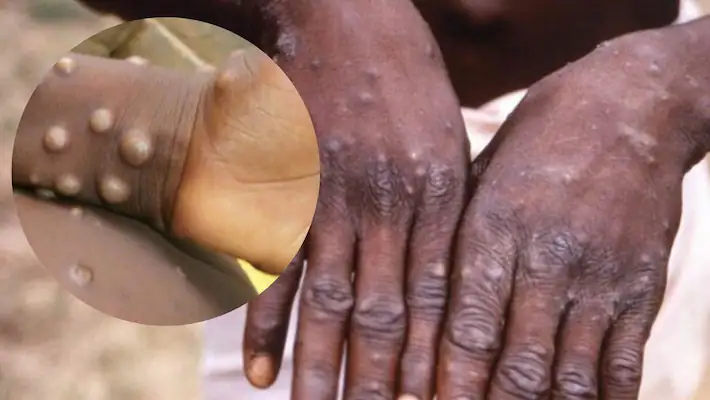A small outbreak of monkeypox has recently occurred and with world’s experience from COVID-19, the world is understandably anxious. Indeed, even the US quickly ordered 13 million vaccine doses in response. Now many travellers are left wondering: what is monkeypox and do I need to worry?
What is Monkeypox?
Monkeypox is a rare disease caused by a virus that was originally discovered in colonies of monkeys back in 1958. It creates blisters on your skin similar to chicken pox and other pox-like diseases. Other symptoms of monkeypox include fever, headache, muscle aches, backaches, swollen lymph nodes and a fluid filled rash, starting on the face. Eventually, the rash becomes crusty and the scabs will fall off. The illness usually lasts for 2 to 4 weeks.
According to the US Centers for Disease Control, the first human case of monkeypox was in 1970 in the Democratic Republic of the Congo. Since then, monkeypox has been reported sporadically in people in several other central and western African countries: Cameroon, Central African Republic, Cote d’Ivoire, Democratic Republic of the Congo, Gabon, Ghana, Liberia, Nigeria, Republic of the Congo, and Sierra Leone. The majority of infections are in Democratic Republic of the Congo.

How do I catch monkeypox?
Monkeypox is transmitted by the bite of infected rodents that carry the virus in Africa or from person to person through respiratory or direct contact with an infected person. In general, you will need to have close skin-to-skin contact with people who are infected with the virus in order to catch it. This means you can catch the virus from touching, sharing toothbrushes, kissing, sleeping next to one another (surface contamination from bed sheets is possible), and so on.
It is possible that the virus can be transmitted when the patient develops early symptoms such as coughing, but prior to the appearance of blisters. This might also suggest that transmission could occur from an asymptomatic individual, but this has not been confirmed yet.
How did the current spread of monkeypox happen?
The current outbreak of this disease was started by a traveller who visited Nigeria and returned to the United Kingdom where he was diagnosed. Subsequently, through contact with this initial case, more suspected and
confirmed cases of monkeypox have been reported by more countries. Because this infection can have a relatively long incubation period (5-21 days), additional cases were expected. During the past week, Portugal, Spain, the US, and Canada reported small clusters of patients. Germany, Belgium, Sweden and France are the latest countries to report one or several possible cases. Not all the reported cases have been confirmed by laboratory testing. Globally, the total number of suspected and confirmed cases at the time of writing is approximately 160 across the following countries:
- Argentina
- Austria
- Belgium
- Canada
- Denmark
- France
- Germany
- Italy
- Israel
- Netherlands
- Portugal
- Spain
- Sweden
- Switzerland
- United States
- United Kingdom
How is it spreading so fast?
Close personal contact is required for transmission of this virus. Travellers who have contracted the virus won’t know they have it for a few days. Therefore, they can return home before becoming sick and then possibly transfer the disease to their close contacts. For example, some of the current cases have been traced to large social gatherings where the virus was transmitted to people who subsequently hopped on a plane and travelled to other countries. The good news is that this disease is easier to contain because transmission requires close personal contact.
Do I need to worry about monkeypox when I’m travelling?
In short: no.
Occasionally, there are small outbreaks, but since transmission of the virus is usually low, those outbreaks can be quickly contained. Fortunately, the monkeypox strain in the reported cases is a milder variant of the virus. People are at low risk of exposure since monkeypox is a relatively rare disease that is not highly contagious. If you are planning on travelling, it is still a good idea to wear a mask and avoid close contact with individuals who are coughing, have a fever, or generally look unwell.
I’m still worried, what should I do?
Use Sitata to travel worry-free! Did you know we were the first in the world to warn travellers about COVID-19 (when it was reported as a large number of cases of pneumonia)? We use advanced software to monitor for threats and disruptions that could throw off your travels and that includes disease outbreaks like monkeypox. Naturally, we’ll continue to monitor the situation and warn travellers warn you if you are at risk or have a trip planned to an area that has seen monkeypox cases recently..
Preventive measures include washing hands often and avoiding contact with wild animals and products made from wild animals. Furthermore, international travellers should also avoid contact with people who are sick. Recently, a new vaccine called JYNNEOS (IMVANEX, IMVAMUNE) was approved by the US Food and Drug Administration only for use in people who may be at high risk of exposure to this infection such as healthcare workers. However, it is available in limited quantities only from authorized providers and limited to adults 18 years of age and older. As such, it’s likely not an option for most travellers so try to stay aware and avoid close contact with those who might be infected.



